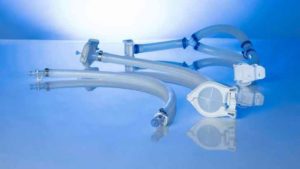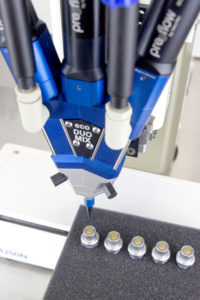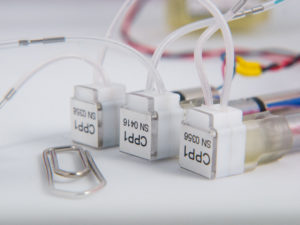High-Pressure ‘Push-Fit’ Fluid Connections To Larger Bore Sizes
Parker Instrumentation has extended the applications potential of its unique 'push-fit' fluid connectors for high-pressure industrial applications.

Parker Instrumentation's revolutionary tube fitting for permanent and high pressure connection applications, assembles in seconds via a push-fit, and is now available in sizes to 1 inch / 25 mm.
Eight new variants allow the 20,000 PSI (1,379 bar) rated connector to be used on larger metric and imperial tubing sizes of 14, 16, 18, 20, 22 and 25 mm, and 3/4 and 1 inch. This extends the cost savings potential of this innovation from current small bore applications into many new areas such as high pressure hydraulic systems, steam and gas services and supply lines in factories, plants, power stations and ships, and high performance test equipment.
Assembled by means of a simple push-fit operation, Parker Instrumentation's Phastite connectors provide permanent connections for high-pressure fluid systems. For permanent connections, and these elevated pressures, system builders would typically use either welded or 'cone and thread' style fittings, which are time consuming and expensive to install. Compared with these products, Parker Instrumentation's Phastite connectors can reduce installation costs by a factor of 90% or more.
Phastite employs a compression assembly principle using a novel form of toothed profile, which makes the seal. The connectors are supplied as one-piece components. To make a joint, all that's required is to insert the tube, and then push the collar along the connector body until it reaches a dead stop. This operation is performed by a simple hydraulic tool, and takes a few seconds. The tool requires no skill to use, and assures users of right-first-time connections.
This assembly approach contrasts with the requirement to perform a 360-degree weld around the circumference of a tube, an operation requiring skill, consumables, expensive equipment, and up to 10 minutes of time. Or, the coning and threading of a tube end to prepare it for use in a special screw-together fitting, operations that again require skill, and time - in this case up to 30 minutes or more. For many applications, the quality of the weld is also tested by means of dye penetration, or x-ray inspection, adding further substantial costs to the installation process.
Inside Phastite connectors is a unique sealing system, based on a collar that slides along an angled body, in the process compressing a number of circular profiles into the tubing. At the end of the short travel is a vertical face that provides confirmation of correct assembly. The multiple profiles mean that less pressure is applied at each sealing point than a traditional fitting. This allows Phastite to be used with thin wall tubing - a further major benefit when compared with cone and thread fittings (which require more expensive thicker wall tubing in order to allow for the threading and coning).
Phastite is much faster to assemble than welded and cone and thread fittings, but also simplifies the process, removing a major element of industrial system building cost. The very high degree control over make up that the tooling automatically imposes also assures users of right-first-time assembly. This is not the case with welded and cone and thread fittings, where many users expect that there will a certain degree of rework. When used to replace a welded fitting, the Phastite connector also eliminates any need for a 'hot work permit', another major equipment building expense faced by many organizations.
The 20,000 PSI (1,379 bar) pressure rating of Phastite opens up an extremely large potential marketplace. Welded, and cone-and-thread, style tube fittings are used in industrial applications where there are pressures above those that can be handled by ferrule types - which is broadly speaking above 6,000 PSI / 413 bar. Applications include high pressure hydraulics, deepwater oil and gas drilling, ROVs and subsea, laboratory testing, and high pressure machinery such as water-jet cutters. Welded fittings are additionally used in lower pressure applications if there is a need for a 'fit and forget' permanent connection, or where a leak could have serious consequences. Examples include subsea applications, aerospace, boat building and military equipment, and plants that are remote or unmanned, or have safety implications.
The extended Phastite range now includes straight union, union elbow, 'tee' and union cross connector shapes in imperial and metric sizes from 1/4 to 1 inch and 6 to 25 mm. There is also a range of termination connectors that provide a link between the equipment's fixed, permanent tubing, and any element that needs to be disconnected or maintained.
The assembly tool is an important part of the package, and Parker Instrumentation has developed a compact hydraulic tool for equipment manufacturers.
Source: Parker Hannifin Corp




